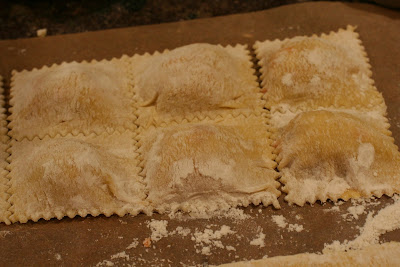My eldest daughter declared last week that she will henceforth be a vegetarian. While I am not prepared to convert the entire household, I've been doing my best to cook meals that are mostly meatless. It's forced me to go a bit out of my comfort zone and I've been scouring my cookbooks for new and interesting vegetarian recipes that will satisfy the whole family. This one, a vegetable curry dish, was really yummy. It's a definite keeper. I found it in the cookbook Fields of Greens which contains recipes from the Greens Restaurant in San Francisco.
The recipe makes what is essentially a vegetable stew, and should be served over basmati rice. A recommended accompaniment is a mango and papaya chutney. I made it with only mangoes because frankly I'm still deciding whether or not I truly like papaya...
Begin the chutney first, because it is supposed to sit for 1-3 hours before serving in order for the flavors to blend.
You will need:
1/4 small red onion, finely diced (about 1/3 cup)
1 tablespoon champagne vinegar
1/4 cup fresh lime juice, about 4 limes
1/4 cup sugar
3/8 teaspoon freshly ground cinnamon
3 pinches ground cloves
3 pinches cayenne pepper
1 mango, peeled and cut into 1/2-inch pieces (having omitted the papaya, I used 2)
1 papaya, peeled, seeded, and cut into 1/2-inch pieces
Bring a small pot of water to boil and drop in the onion for 30 seconds. Drain the onions, then immediately combine with the vinegar in a bowl. Combine the lemon juice, sugar and spices in a saucepan and cook over medium heat for 2-3 minutes to make a light syrup. Mix the fruit together with the onions, then pour the syrup on top and stir.

Now, to start the curry, mix together the following spices:
1 tsp cumin seed
2 tsp coriander seed
1 tsp fennel seed
1/2 tsp fenugreek
1/2 tsp black mustard seed
1/2 tsp cinnamon
1/4 tsp ground cardamom
1/4 tsp ground cloves
1/4 tsp cayenne pepper
Toast the spices for 1-2 minutes over low heat in a dry, small skillet, stirring often until they become aromatic. Then grind them together with a mortar and pestle or a spice grinder.

In a medium saucepan, combine 1 lb fresh tomatoes, peeled, seeded and chopped (or 1 16-oz can tomatoes, chopped) with 1 1/2 cups cold water, 1 tsp salt, 2 tablespoons of giner, and 1 tablespoon of the mixed spices. Simmer, uncovered, over low heat for 15-20 minutes.
Bring a small pot of water to a boil and add 1/4 tsp salt. Blanch 1/4 lb (about 2 cups) sugar snap peas in the boiling water for 2 minutes, then scoop them out with a slotted spoon, rinse them under cool water, and set aside.
Then use the same pot of boiling water to blanch 1/4 lb (about 1/2 cup) of freshly shelled peas, again for just a couple of minutes, drain, rinse, and set aside.
Chop 1 yellow onion finely, then heat 1 tablespoon peanut oil in a large skillet over medium heat. Saute the onion for about 7-8 minutes, until soft.
Add to the pan:
4 garlic cloves, finely chopped
2 medium-sized carrots, cut in half lengthwise and sliced 1/2 inch thick on a diagonal
1 lb new potatoes, cut into halves, quarters or 1-inch pieces if large
Cook over medium heat for about 10 minutes.
Next, add:
1/2 small head of caulifower chopped into florets
1 medium zucchini, cut in half and sliced 1/2 inch thick on a diagonal
And, the remaining toasted spices
Saute for 5 minutes, until just heated through
Add 1 1/2 cups canned coconut milk and the tomato mixture. Simmer, uncovered for 30 minutes.
Meanwhile, cook some basmati rice. When it is done, add the snap peas and English peas into the stew, and serve it alongside the rice and the mango chutney. The rice may be tossed with toasted cashews if desired, good for some extra protein.























































